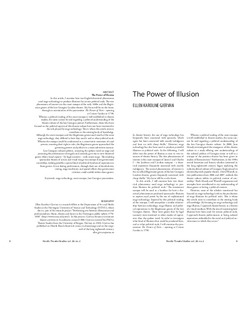| dc.description.abstract | In this article, I examine how two English theatrical phenomena used stage technology to produce illusions for certain political ends. The two phenomena of interest are the court masque of the early 1600s and the illegitimate genres of the late Georgian London theatre. My focus will be on the latter, through an examination of the pantomime The Picture of Paris – opening at Covent Garden in 1790. Whereas a political reading of the court masque is well established in theatre studies, the same cannot be said regarding a political understanding of the theatre culture of the late Georgian period. Furthermore, those who have focused on the political aspects of this theatre culture have not been interested in the role played by stage technology. This is where this article aims to contribute to the existing body of knowledge. Although the court masques and the illegitimate genres used much of the same stage technology, they differed in how they used it and to what political ends. Whereas the masque could be understood as a conservative statement of royal powers, asserting their right to rule, the illegitimate genres approached the governing powers and policies in a more subversive manner. Late Georgian cultural politics, censoring the spoken word on stage and patenting the performance of tragedy and comedy, gave rise to new theatrical genres where visual aspects – by legal necessity – took centre stage. The resulting spectacular theatre of action and visual image was exempt from government censorship, making possible a special kind of political freedom of expression in these genres. It was during performance, through their use of dumb shows, setting, stage machinery and special effects that government criticism could unfold within these genres. | nb_NO |
